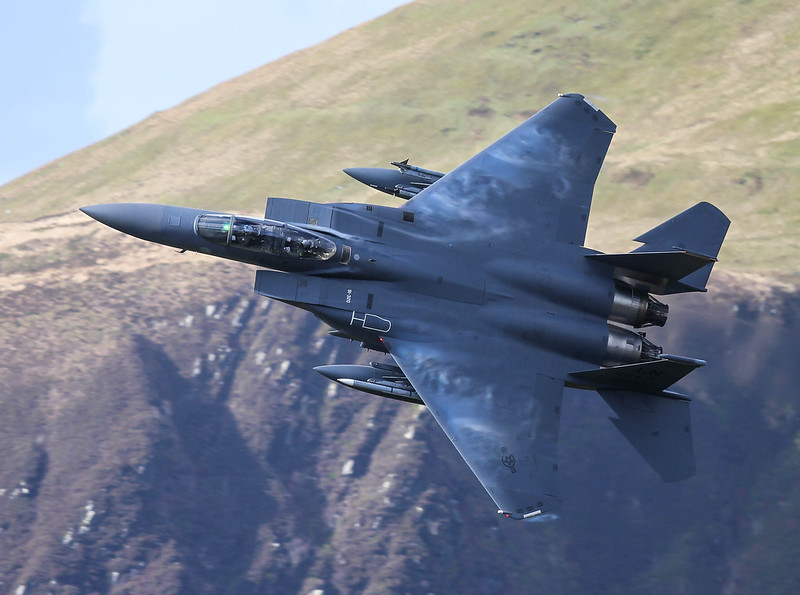Post amazingly cool pictures of aircraft (Volume 2)
Discussion
Eric Mc said:
There is more to it than that. Most airliner windows today are pretty square - so De Havilland were not too wrong. Their error was in the strengthening/reinforcing pieces that were at each corner apex were not strong enough.
In the Comet from which most wreckage was recovered (G-ALYP)it was concluded that the failure was not at a window but in one of the roof apertures under which were placed ADF aerials.
Here is the wording from the AAIB accident report -
"After the equivalent of only 3,000 flights investigators at the Royal Aircraft Establishment (RAE) were able to conclude that the crash had been due to failure of the pressure cabin at the forward ADF window in the roof. This 'window' was in fact one of two apertures for the aerials of an electronic navigation system in which opaque fibreglass panels took the place of the window 'glass.'
You can see in this picture that window isn't really !square". It does have radiused corners -

Here is a picture of the window of a modern Boeing 737 for comparison -

The 737 does rather seem an exception to the rule though. Also the outer panes are always more rounded than the inner, non pressurised panesIn the Comet from which most wreckage was recovered (G-ALYP)it was concluded that the failure was not at a window but in one of the roof apertures under which were placed ADF aerials.
Here is the wording from the AAIB accident report -
"After the equivalent of only 3,000 flights investigators at the Royal Aircraft Establishment (RAE) were able to conclude that the crash had been due to failure of the pressure cabin at the forward ADF window in the roof. This 'window' was in fact one of two apertures for the aerials of an electronic navigation system in which opaque fibreglass panels took the place of the window 'glass.'
You can see in this picture that window isn't really !square". It does have radiused corners -

Here is a picture of the window of a modern Boeing 737 for comparison -

I would say that ALL modern airliner windows are essentially square or rectangular shaped. The curvature of the corners does vary, of course. But what you don't tend to see on airliners are circular or oval windows.
I always think that the windows in the Caravelle were the most innovative and it's a pity no other airliner adopted the same design -

I always think that the windows in the Caravelle were the most innovative and it's a pity no other airliner adopted the same design -

Eric Mc said:
I would say that ALL modern airliner windows are essentially square or rectangular shaped. The curvature of the corners does vary, of course. But what you don't tend to see on airliners are circular or oval windows.
I always think that the windows in the Caravelle were the most innovative and it's a pity no other airliner adopted the same design -

The windows on Vickers Viscounts were pretty good too.I always think that the windows in the Caravelle were the most innovative and it's a pity no other airliner adopted the same design -

Eric Mc said:
I would say that ALL modern airliner windows are essentially square or rectangular shaped. The curvature of the corners does vary, of course. But what you don't tend to see on airliners are circular or oval windows.
I always think that the windows in the Caravelle were the most innovative and it's a pity no other airliner adopted the same design -

I love the caravelle, my favourite passenger jet.I always think that the windows in the Caravelle were the most innovative and it's a pity no other airliner adopted the same design -

Here's an interesting account of a restoration of cockpit to a simulator which I read recently
http://www.warbirdsnews.com/warbirds-news/sud-avia...
hidetheelephants said:
The windows on Vickers Viscounts were pretty good too.
Of all the British manufacturers, in the mid 1940s Vickers had the most experience in building pressurised aircraft. They took no risks with the Viscount regarding apertures. Not only were the windows oval, so were the doors (on the Series 700). On the Series 800 they relaxed their cautiousness a bit and made the doors more rectangular.The Vickers Valiant also had an oval door.
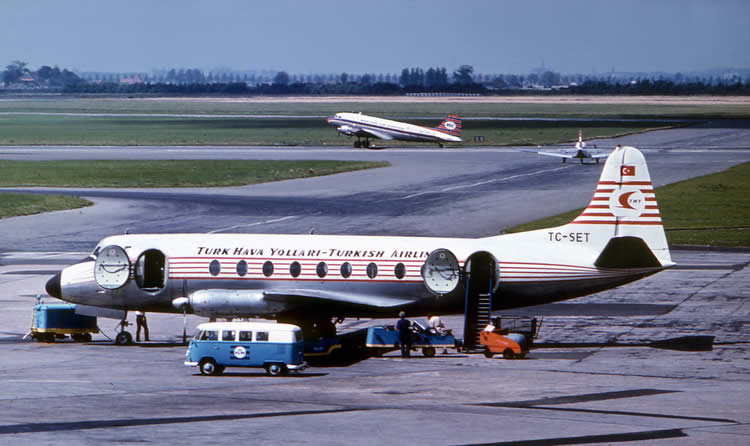

Eric Mc said:
Of all the British manufacturers, in the mid 1940s Vickers had the most experience in building pressurised aircraft. They took no risks with the Viscount regarding apertures. Not only were the windows oval, so were the doors (on the Series 700).
Yet the windows on the Viscount are noticeably huge. Was that a result of Vickers being highly confident in their calculations?I think that was a factor. Also, because it was a turboprop, it didn't fly as high as a pure jet - so the differential between inside and outside air pressures would not have been as severe.
The Fokker F-27 Friendship also had large oval windows.
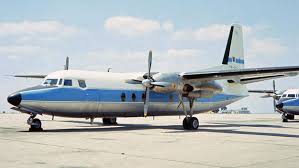
Interestingly, the successor to the F-27, the F-50, had the more "square" shape we associate with airliner window today -

The Fokker F-27 Friendship also had large oval windows.
Interestingly, the successor to the F-27, the F-50, had the more "square" shape we associate with airliner window today -

Why you shouldn't do engine power checks on block-paved hardstanding....
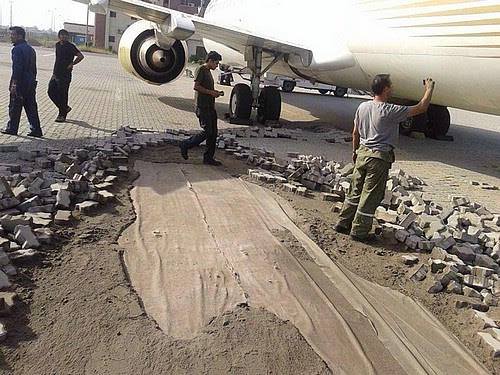
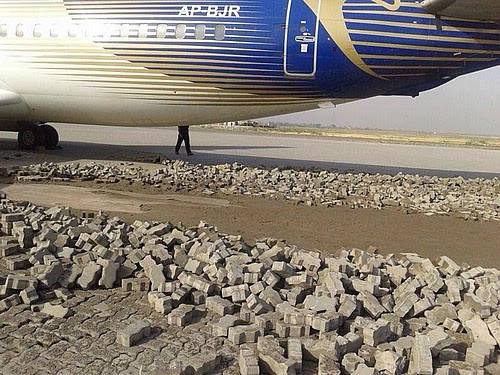
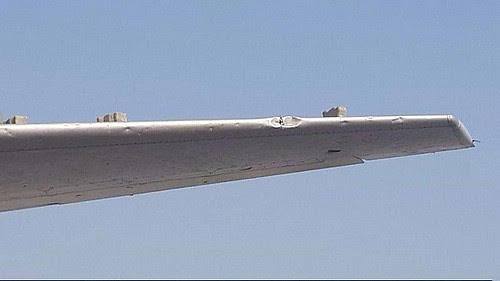



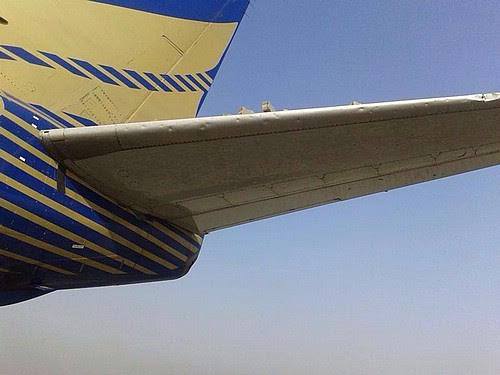
http://aviation-safety.net/wikibase/wiki.php?id=16...







http://aviation-safety.net/wikibase/wiki.php?id=16...
Not very clever...
Reminds of the time I did a flight test course at Cranfield in their old Jetstream. We lined up and pilot put power on but had a loud clonk so he abandoned. All gauges within limits so he tried again. Same result. Third time there was no clunk so off we went for an hour or so. Upon landing and shutdown we realised what had been going on after seeing the bent prop and dents in the fuselage. Runway concrete was breaking up and the prop was picking it up and flinging it laterally. How he didn't have any adverse readings or vibration warnings I really don't know. Needless to say it was immediately grounded.
Reminds of the time I did a flight test course at Cranfield in their old Jetstream. We lined up and pilot put power on but had a loud clonk so he abandoned. All gauges within limits so he tried again. Same result. Third time there was no clunk so off we went for an hour or so. Upon landing and shutdown we realised what had been going on after seeing the bent prop and dents in the fuselage. Runway concrete was breaking up and the prop was picking it up and flinging it laterally. How he didn't have any adverse readings or vibration warnings I really don't know. Needless to say it was immediately grounded.
Dr Jekyll said:
Could also qualify for the 'Classics dwarfed by moderns' thread.
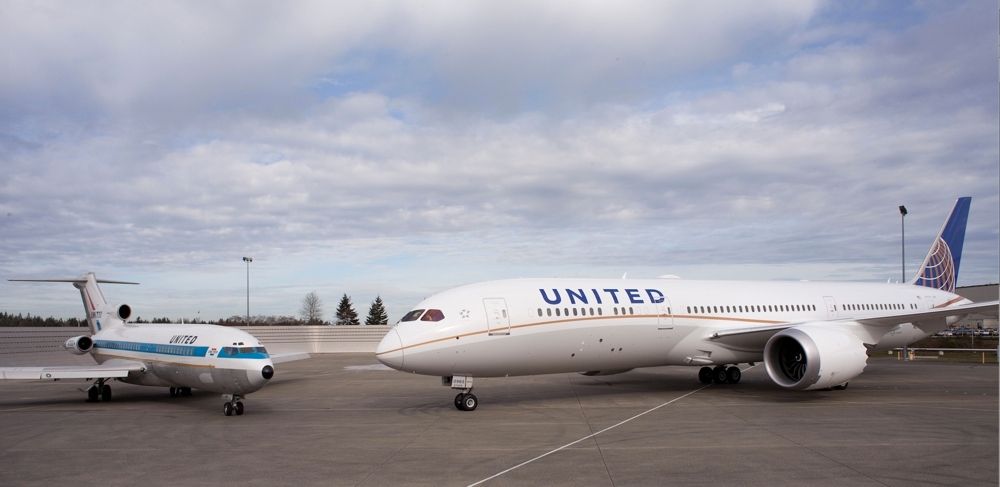
The 727 has been restored over a 25 year period for display in the Seattle museum of flight. So well restored that the easiest way to get it to the museum a few miles away, will be to fly it.
Interesting comparison. It just shows how big the 787 actually is. And it also shows what you can do with only two engines these days when 50 years ago you needed three.
The 727 has been restored over a 25 year period for display in the Seattle museum of flight. So well restored that the easiest way to get it to the museum a few miles away, will be to fly it.
Eric Mc said:
Dr Jekyll said:
Could also qualify for the 'Classics dwarfed by moderns' thread.

The 727 has been restored over a 25 year period for display in the Seattle museum of flight. So well restored that the easiest way to get it to the museum a few miles away, will be to fly it.
Interesting comparison. It just shows how big the 787 actually is. And it also shows what you can do with only two engines these days when 50 years ago you needed three.
The 727 has been restored over a 25 year period for display in the Seattle museum of flight. So well restored that the easiest way to get it to the museum a few miles away, will be to fly it.
Gassing Station | Boats, Planes & Trains | Top of Page | What's New | My Stuff










